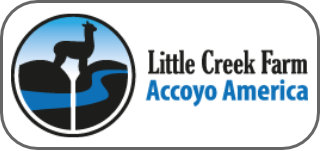- At a recent Iowa Power Farming Show seminar, attorney Erin Herbold-Swalwell shared her planning expertise with Midwest farmers in attendance. Prior to entering private practice at Brick Gentry P.C., Herbold-Swalwell was the staff attorney at the Iowa State University Center for Agricultural Law and Taxation. In addition to her professional experiences in research and writing, a background on her own family’s Iowa farm helps her work through the complex planning issues rural families face. more »
- Hay is made to feed livestock in periods of forage dormancy. Many times hay is packaged in the form of a big round bale. This method of harvest is preferred by many farmers because of low labor needs and little need for facilities or infrastructure to feed the hay. One of the largest downfalls to hay in the round bale form is the weathering that occurs when the bales are stored outside. The round shape of the bale results in a large surface area on the outside of the bale for weathering to occur. The figure below illustrates that 1/3 of the entire bale resides in the outer 6" of a 5.5 foot bale. more »
- Outbreeding (also called crossbreeding) is the opposite of inbreeding, in that unrelated animals are mated with the effect of increasing heterozygosity. Let’s step through an example by starting with two unrelated populations, 1 and 2. Population 1 has gene frequencies at the A locus of p1 = 0.8 and q1 = 0.2. Population 2 has gene frequencies at the A locus of p2 = 0.1 and q2 = 0.9. Right away we can tell the two are unrelated as the gene frequencies differ so much. Now cross them to create an F1 generation. (Back in Explaining Mendel’s Results Visually we defined an F1 generation as one resulting from the crossing of two purebred populations. Here we are using it more broadly to include two unrelated, but not necessarily purebred, populations.) more »
- "Murphy’s Law says that Once you’ve baled your hay it will rain!” says Frank Mickan, Pasture and Fodder Conservation Specialist, NRE, Ellinbank. Many farmers are starting to realise the benefits of feeding or selling higher quality hay in recent years because they have learnt that higher quality means more meat or milk production. As a result some farmers are risking making slightly earlier hay and so increasing the risk of meeting rain head on! However earlier hay making can be greatly assisted by utilising mower conditioners and tedders. Unfortunately the higher the quality is the hay, the higher the losses when bales become wet from rain. This higher quality is due to the higher amount energy (eg. water soluble carbohydrates) and protein in the plant. When hay becomes wet plant respiration, leaching, and possibly mould, microbial and yeast growth later on, all result in dry matter and quality losses. So rain damage is to be avoided or minimised as much as possible Following are some considerations which may be of assistance to you. more »
- The accuracy of fodder analysis depends on the sample you send to the laboratory. It is critical that the sample represents the average composition of the "lot" of fodder sampled, otherwise the laboratory tests will not be useful. A "lot" is defined as hay or silage taken from the same cutting, at the same stage of maturity, the same species (pure or mixed) and variety, the same paddock, and harvested within 48 hours. Other factors influencing the definition of a "lot" include rain damage, weed content, soil type, treatment after cutting and storage effects. A "lot" of baled hay or cubes should not exceed 200 tonnes. more »
